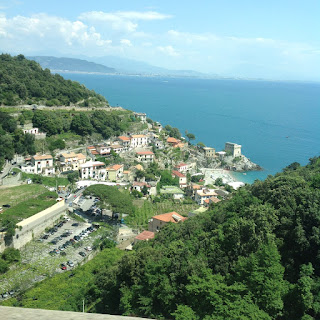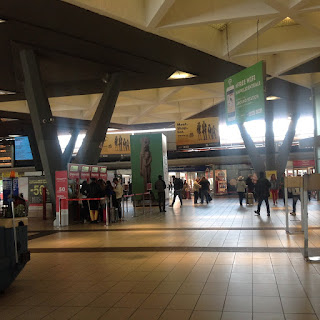Not a great sense of English language syntax, but nice pathos. Graffito on an U-4 platform.
Poor Stormy, uncertain as to what love is. And what of our red-pen writer, who is obviously distraught over Stormy's lack of certainty? Having returned home to Wien, I find myself riding the U-Bahn again, that most marvelous of conveyances. When I am alone on the U-Bahn, I begin to feel that I am one of Wim Wender's angels in "Wings of Desire." I do not believe I would be surprised if the world suddenly shifted to black-and-white. Snippets of conversation float through my brain, Deutsche, Turkish, Russian, even English. I focus on one thread of human sound and then let go that tendril and focus on the next. I am a ghost, an aural voyeur.
Of course, when "Wings of Desire" was made, people were not sitting around on the U-6 while their souls were sucked from their bodies by small hand-held devices. The great evolution of "Yell" phones does mean that there are the occasional very high volume one-way conversations that crash over everything and everyone else. I enjoy trying to recreate the unheard portion of the conversation: "Yes, Stormy, I am leaving you. You do not know what love it."
I love the U-6. It is even more fun to say so because the U-6 is not every Wiener's favorite line. It runs from Siebenhirten in the south of Wien all the way to Floridsdorf on the far side of the Donau. Some people disparage the U-6 because it connects two far-flung and not so well off districts with the center of the city. The U-4 is sometimes painted with the same brush. Alas for these poor detractors, for the U-6 and U-4 are my favorite U-Bahn lines. I never ride the U-1 or the U-2 as they wander off into the hinterlands of the east and north. The U-3 is the line that gives me the chappy-ass with it's always packed trains full of snooty shoppers, tourists and tired working musicians on their way to yet another Mozart gig for said tourists. Bah! A pox on the U-3. I would rather walk. As for the U-5, well, it is imaginary. Somehow in the One-to-Six numbering system, the poor #5 got skipped. It does not exist.
And wait, what is this.......? (Cue time travel music) Suddenly we aren't in Wien anymore, Toto.
As I was sorting through the photos from Napoli, I came across two that had been misplaced amongst the pizza crusts and gelatti drippings. So please allow me this small redux.
This is the Napoli Math Guy. He sits in the sun on via Benedetto Croce, waiting to solve the most insoluble mathematical conundrums. Without any device. For a small fee. The cruise ship tours mostly walk by without much of a glance, since the Math Guy is not an old church.
I'll close with this one, a photo from a bookstall in the Storico. If the pairing was meant to catch one's attention, it certainly worked in my case. I glanced over as I walked past, did a double take, and was sucked back to the stall like a magnetic tractor beam had a lock on my ass. Having read both books, the pairing was even more resonant. I will leave any conclusions to the reader's imagination.
Next up in The Rev's Blogland: A Guide to the Pissoirs of Wien! Until then, Ciao for Now.

















































